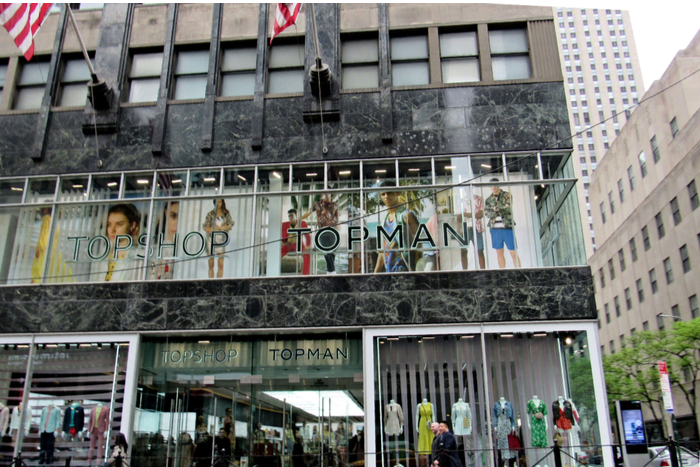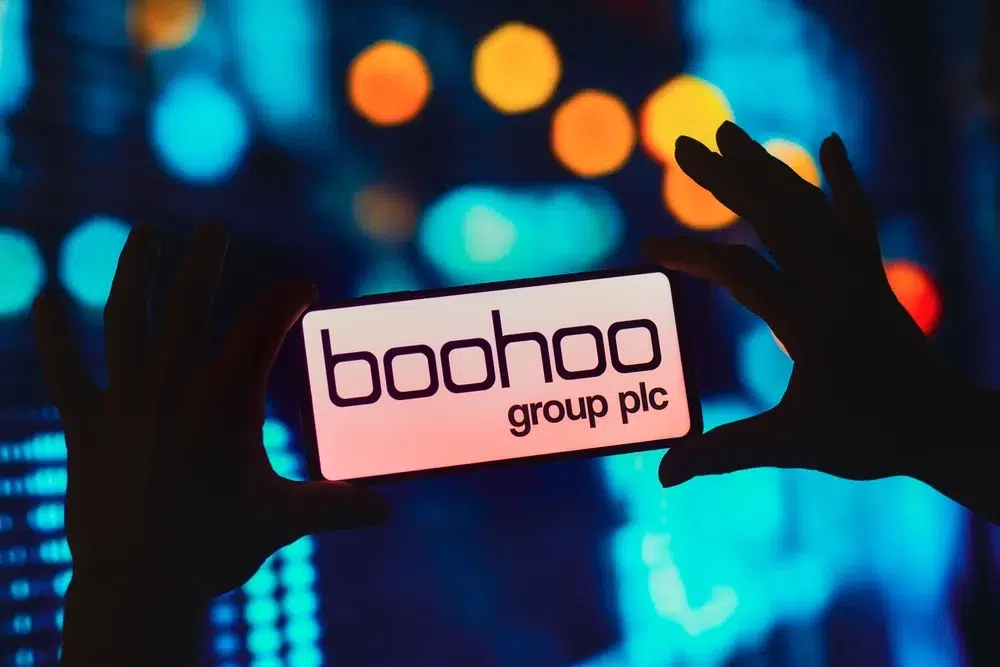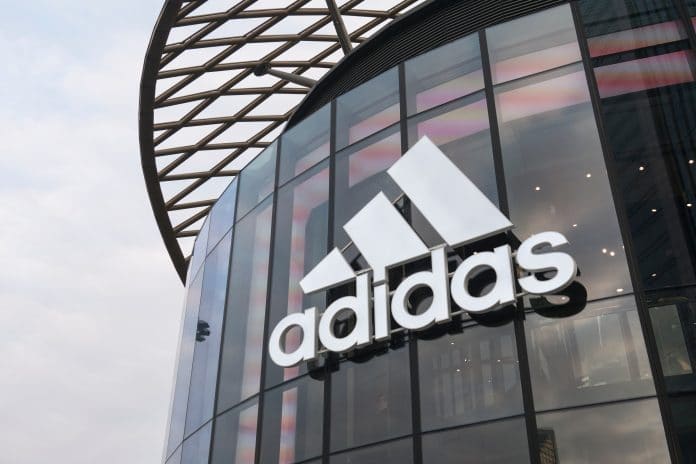In 2009, US shoppers were seen queueing round the block in New York City in anticipation of Topshop’s debut in the Big Apple.
Topshop, which was part of Sir Philip Green’s Arcadia Group retail empire at the time, declared its intention to take on the US market despite the economic misery from the global financial crisis at the time.
When the fashion retailer opened its 25,000sq ft Soho superstore, it was launched by Green himself and British supermodel Kate Moss.
Entering the US had cost Topshop up to $24 million. The four-storey shop had 200 staff, 32 changing rooms and a DJ booth suspended from the ceiling. Green said at the time that he anticipated up to 15 US stores, including in Miami, Los Angeles, Las Vegas and Boston.
A decade later, after a much-reduced growth trajectory gave Topshop only 11 stores compared to more than 300 stores in the UK, Arcadia announced plans to close all of its US Topshop stores as it sought to restructure after filing for bankruptcy protection.
The US market proved less supportive of the iconic brand than compared to its native market in the UK. In fiscal year 2017, more than 90 per cent of Topshop’s revenue came from the UK and barely nine per cent came from the US and all other markets combined.
Topshop had stores in New York, Los Angeles, Atlanta, Las Vegas, San Diego, Chicago, Houston and Miami. It confirmed at the time that it would continue to sell to the US online even after stores closed.

Topshop’s US store closure announcement in 2019 should not have come as a major surprise given that the company posted an annual loss of $14 million in 2018.
To add to its woes, Green was embroiled in a sexual harassment scandal that caused the company to lose lucrative partnerships, including with Beyoncé-owned brand Ivy Park, which Topshop helped launch.
At the turn of the year, Arcadia collapsed and was split up, with online rivals Boohoo Group and Asos each taking a share of the pie as part of the administration and sale process. Topshop became part of the Asos family.
Since then, it has sought to return Topshop to the US after Asos partnered with US retail giant Nordstrom to sell its clothes in physical stores again. The new joint venture, which was announced this month, will help “drive the growth of these brands” and build “greater awareness and engagement” in the US and Canadian market.
The deal sees Nordstrom – which first struck a deal with the former Arcadia flagship brand nine years ago – buy a minority stake in the Topshop, Topman, Miss Selfridge and HIIT brands.
It also marks the first time that Asos has struck a deal with a retailer with physical stores, having always only traded online.
Nordstrom has 350 bricks-and-mortar stores in North America and a strong online business, which Asos hopes to tap into despite having a strong ecommerce presence of its own in the region.
Asos will retain operational and creative control of Topshop, Topman, Miss Selfridge and HIIT but will collaborate on reaching a larger customer base.

The new deal begs the questions as to whether Topshop is better off in the US.
During its bankruptcy in the US, Topshop’s brand identity in the UK remained strong. However, the shifting consumer behaviours along with the effects of the Covid-19 pandemic presented unfathomable challenges for the retailer.
Arguably, Topshop struggled to keep up with consumers’ demands and behaviours due to a weak online offering.
Meanwhile, in the US, Topshop relied on the product to sell the brand, rather than build a brand persona and a community of engaged customers who it could align with. Topshop also had no strong community online and failed to invest in a tonne of marketing in the US.
Although Topshop may not have invested strongly enough in its US market, Asos saw its US sales rise 80 per cent after opening its first US warehouse in 2019. At the time, Asos chief executive Nick Beighton said refocusing the company’s marketing strategy would be key to growth in the US.
The US market is a huge market by any measurement, and to get traction and a national name, a retailer would arguably have to open a lot of stores. It may also be more challenging to cater to different US states.
Ever since 2012, Nordstrom has featured Topshop and Topman as one of their important departments that appeals to younger customers. It was also the first department store chain that brought these brands to the US and Canada.
“Asos won’t make the same huge errors as Arcadia a decade ago”
The new deal means that ecommerce orders made through Asos will be available for pick-up in Nordstrom and Nordstrom Rack stores starting this autumn. Nordstrom president Pete Nordstrom said the collaboration could redefine the way a department store operator works with brands.
Melissa Minkow, retail industry lead at digital consultancy CI&T, argued that Topshop has strong potential in the US as a Nordstrom store within a store because of the overlapping demographics among the two retailers.
“Topshop has maintained a reputation in the US for being on-trend, and Nordstrom is very capable of bringing the right consumers for Topshop into its stores,” she said.
“Being a UK brand means there’s a level of novelty and prestige associated with Topshop in the US. Topshop isn’t as shiny of a brand in the UK as it is in the US because it doesn’t carry the clout of being foreign.”
Although the deal presents opportunities for both companies, it means Nordstrom will gain exclusive multi-channel rights for Topshop and Topman in North America, as well as being the only bricks-and-mortar presence for these brands worldwide.
Retail expert Nelson Blackley told Retail Gazette that the partnership provides the ability for both Asos and Nordstrom to leverage their complementary retail models and in particular “enabling Nordstrom to attract younger customers”.
“Nordstrom can increase their appeal to the key 20-somethings retail demographic whose spending power will continue to grow into the future with increased income,” he said.
“Partnering with Nordstrom, with over 350 physical stores and online sites that get almost two billion annual visits, supports the Asos US strategy and crucially Asos will also retain operational and creative control of the Topshop brands.
“However, it’s a fascinating development and interesting ‘reincarnation’ for the Topshop and Topman brands in this huge overseas market, as many believe their high profile move into the US in 2009 led by Sir Philip Green, which ended a decade later, played a major part in the eventual demise of the Arcadia Group.
“However, Asos won’t make the same huge errors as Arcadia a decade ago.
“Notably, the failure by Arcadia to build the audience they needed, in particular through social media, meant an over-reliance on the product to sell the brand, rather than having built a brand persona and a community of engaged customers with whom they could align. This meant there was no real foundation for them to grow.
“When the bottom fell out of the extremely competitive and saturated US ‘mid-market fashion’ retail, they had no convincing brand story to rely on and no strong community online.
“While Arcadia skimped on building a social media following in the US, Asos are fully aware that the company’s marketing strategy is key to growth in the US.”
Topshop previously had a US presence but this was relatively small. The Nordstrom deal provides it with significant new distribution online as well as offline. Nordstrom can expect to market the brand, giving it a level of exposure and prominence it previously lacked.
Sabrina Benjamin, programme management consultant at Selfridges, said Topshop already appeals to the under 25s and in some cases the under 30s in the US.
“US fashion trends varies from state to state. As with any retailer there will wins and losses with each state,” she said.
“The US has a higher population density therefore the sales opportunity is much greater in the US, than it is in the UK.
“If you layer the level of diversity on top, then the Topshop range will have a greater reach and possibly a greater market across their key items.”
Nordstrom is taking a minority ownership stake in Asos brands as part of a strategy to appeal to younger shoppers.
Compared to Asos, Topshop does not dominate the online sphere. In fact, it has been relatively slow to enhance its site and does not have the sort of fulfilment capabilities that Asos has.
With Topshop having since relaunched as a pureplay brand on the retailer’s website in the UK, Asos has now turned its hand to creating a different multichannel experience for Topshop customers in the US.
Although the joint venture will help boost Topshop’s presence among young US consumers, it can also benefit Nordstrom.
The US department store chain has been seeking ways to innovate and reinvent itself. Part of its reinvention strategy involves a stronger focus on online, direct-to-consumer and curbside pick-up.
Nordstrom has also been working with younger consumer focused brands to attract a younger audience, such as Glossier, and made-to-measure young menswear company Indochina, which has opened 21 shop-in-shops.
Click here to sign up to Retail Gazette‘s free daily email newsletter


















